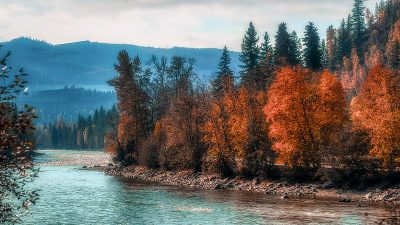New Zealand planning to tap into deeper geothermal resources
In New Zealand scientists are exploring pockets of hot water they suspect are buried between 5km and 7km deep. If successful, these resources could cover more than half of the country's power demand.
Reported locally, there could be possibilities for deep water filling New Zealand’s energy needs.
According to the article, there are efforts being made by scientists to explore “pockets of energy they suspect are buried between 5km and 7km deep.
Geologists think there may be enough scalding hot water locked in underground reservoirs to power more than half the country’s homes – if it can be found and tapped.
They have embarked on a four-year project to plumb the country’s main geothermal hot-bed, the Taupo Volcanic Zone in the central North Island, to depths twice what existing geothermal drilling projects can reach.
Project leader Greg Bignall of GNS Science said there could be the equivalent of up to 10,000MW of electricity, every year for 100 years, in fissures deeper and hotter than they ones they have tapped.
“We have the potential with conventional geothermal energy to expand to 20 per cent [of New Zealand’s electricity] – that is our target,” said Mr Bignall. “If we can go deeper … there is quite a potential [for more].”
Geothermal fluid is born when rainwater penetrates deep into the earth’s crust and encounters sizzling hot rock.
It flows through underground fissures in the rock and sometimes shoots to the surface as mud pools, hot springs or geysers.
Steam from geothermal fluid drawn from as deep as 3.5km – as far as present drilling has gone – powers seven electricity stations, six of them in the Taupo Volcanic Zone, generating about 640MW a year, or 10 per cent of the country’s electricity.
Scientists want to know if there are enough fissures carrying energy-rich fluid below that to justify spending tens of millions of dollars drilling deeper.
GNS will make a three-dimensional computer model of the deep geothermal field with help from fellow Crown scientists at Industrial Research and Auckland and Victoria Universities.
If there are enough “wet, hot” spots, companies such as Mighty River Power or Contact Energy may gain the confidence to drill deeper.
Drilling the deep fields would cost 10 times the $4 million each year allocated for the initial research – but the deeper water could be up to a quarter hotter than the hottest water found so far.
Deeper than 8km, the rock becomes too soft for geothermal drilling. “Nothing is going to happen overnight,” said Mr Bignall.
“But if we don’t start looking at it now, in five years’ time we’ll say, ‘Why didn’t we look at that five or six years ago?’.”
Source: The New Zealand Herald











